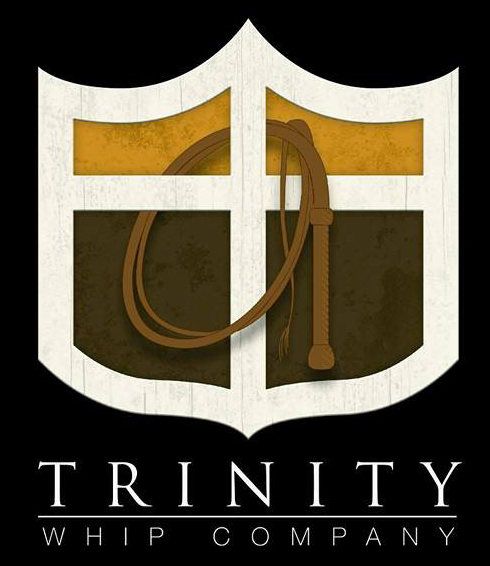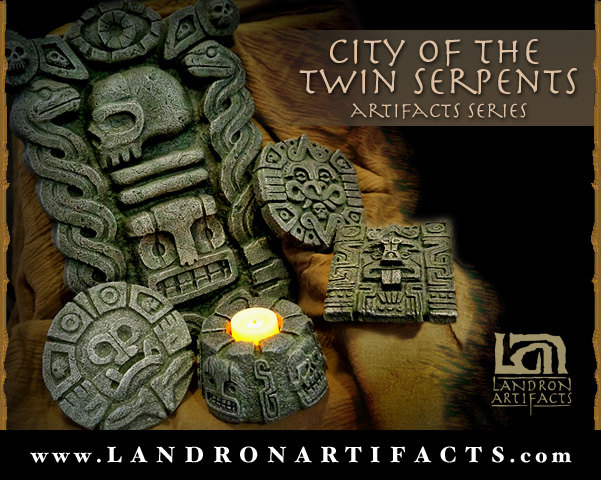By Aaron Sharp ("Paden")
Photos By Jonathan Pokay - March 1st, 2007
“You want me, you're going to have to come and get me!”
 Edward G. Robinson uttered this, along with other lines of memorable dialogue during his noted performance as Caesar Bandello in the 1931 film “Little Caesar”, a movie inspired by the life and time of the infamous Chicago crime lord Alphonse “Al” Capone (Cullers and olpert). Capone and his extensive network of criminal underlings ruled over Prohibition-era Chicago with a seemingly inexorable power and have been a source of endless fascination for individuals worldwide, both during the course of Capone’s tumultuous life and in the decades following his ironic demise.
Edward G. Robinson uttered this, along with other lines of memorable dialogue during his noted performance as Caesar Bandello in the 1931 film “Little Caesar”, a movie inspired by the life and time of the infamous Chicago crime lord Alphonse “Al” Capone (Cullers and olpert). Capone and his extensive network of criminal underlings ruled over Prohibition-era Chicago with a seemingly inexorable power and have been a source of endless fascination for individuals worldwide, both during the course of Capone’s tumultuous life and in the decades following his ironic demise.
 Despite the romanticism imparted to Capone’s activities by some writers and filmmakers, an historical examination of the man and his organization, the so-called Chicago “Outfit”, reveals a picture that is entirely devoid of any noble, good-hearted outlawry (Blakely). During the fourteen years spanning the passing and repealing of the Eighteenth Amendment the Outfit managed an array of elicit gambling operations and houses of prostitution, while steering the political outcomes of Chicago through bribes and intimidation (Blakely; Landesco 18). Yet, the organization’s primary source of income was that which Prohibition had outlawed: liquor (Allsop 24). Contention between criminals over who would dominate the city’s alcohol trade, a conflict often referred to as the “Beer Wars” at the time of their occurrence, resulted in 703 gang related murders during the Prohibition years (Landesco 23; Allsop 16). So powerful was the stranglehold that organized crime had on city that some scholars have argued that Chicago was virtually reduced to a state of medieval feudalism (Allsop 14). The 1928 gangland-style murder of assistant state’s attorney William McSwiggin is demonstrative of the power the criminal element wielded: no less that six grand juries were convened to probe the homicide, but not one returned an indictment (Landesco 23). McSwiggin’s death served only to shine a spotlight on the entanglement between the underworld and Chicago’s civic leadership (Landesco 23). It was only in the wake of the St. Valentine’s Day Massacre that Al Capone was finally branded a “public enemy” by Chicago authorities (Kobler 267). The killings, orchestrated by Capone to eliminate the gang leader’s North Side rivals, resulted in the brutal deaths of seven men, most of them gangsters (Kobler 245). Public reaction to the bloodshed led to a record reward being offered for the murderers (Kobler 247).
Despite the romanticism imparted to Capone’s activities by some writers and filmmakers, an historical examination of the man and his organization, the so-called Chicago “Outfit”, reveals a picture that is entirely devoid of any noble, good-hearted outlawry (Blakely). During the fourteen years spanning the passing and repealing of the Eighteenth Amendment the Outfit managed an array of elicit gambling operations and houses of prostitution, while steering the political outcomes of Chicago through bribes and intimidation (Blakely; Landesco 18). Yet, the organization’s primary source of income was that which Prohibition had outlawed: liquor (Allsop 24). Contention between criminals over who would dominate the city’s alcohol trade, a conflict often referred to as the “Beer Wars” at the time of their occurrence, resulted in 703 gang related murders during the Prohibition years (Landesco 23; Allsop 16). So powerful was the stranglehold that organized crime had on city that some scholars have argued that Chicago was virtually reduced to a state of medieval feudalism (Allsop 14). The 1928 gangland-style murder of assistant state’s attorney William McSwiggin is demonstrative of the power the criminal element wielded: no less that six grand juries were convened to probe the homicide, but not one returned an indictment (Landesco 23). McSwiggin’s death served only to shine a spotlight on the entanglement between the underworld and Chicago’s civic leadership (Landesco 23). It was only in the wake of the St. Valentine’s Day Massacre that Al Capone was finally branded a “public enemy” by Chicago authorities (Kobler 267). The killings, orchestrated by Capone to eliminate the gang leader’s North Side rivals, resulted in the brutal deaths of seven men, most of them gangsters (Kobler 245). Public reaction to the bloodshed led to a record reward being offered for the murderers (Kobler 247).
 Based on the mobsters’ willingness and ability to use violence, it would be easy to dismiss Chicago’s Prohibition-era citizenry as the simple victims of a reign of criminal terror. But a closer look makes such a conclusion difficult to concede. Vice had been a long-standing tradition in Chicago prior to Al Capone’s rise to power. Recognizable forms of organized crime had existed very early in the city’s history (Ruth). In its young days, Chicago offered more gambling per capita than neighboring Philadelphia or New York City (Ruth). By 1857 a district heavily comprised of brothel and other business of poor repute was in full swing (Allsop 24). In the late 1800’s, author W.T. Stead revealed that many well-regarded property owners in Chicago were profiting from businesses they owned in the infamous red-light district (Allsop 24). Alderman Robert Merriam provided the following cynical assessment of the city’s character: “Chicago is unique. It is the only completely corrupt city in America.” (Allsop 13)
Based on the mobsters’ willingness and ability to use violence, it would be easy to dismiss Chicago’s Prohibition-era citizenry as the simple victims of a reign of criminal terror. But a closer look makes such a conclusion difficult to concede. Vice had been a long-standing tradition in Chicago prior to Al Capone’s rise to power. Recognizable forms of organized crime had existed very early in the city’s history (Ruth). In its young days, Chicago offered more gambling per capita than neighboring Philadelphia or New York City (Ruth). By 1857 a district heavily comprised of brothel and other business of poor repute was in full swing (Allsop 24). In the late 1800’s, author W.T. Stead revealed that many well-regarded property owners in Chicago were profiting from businesses they owned in the infamous red-light district (Allsop 24). Alderman Robert Merriam provided the following cynical assessment of the city’s character: “Chicago is unique. It is the only completely corrupt city in America.” (Allsop 13)
 With the onset of Prohibition, the elements of organized crime in Chicago were presented with an unprecedented opportunity for profit. (Allsop 24) And in response to the gangs’ illegal supply of alcohol, the city offered a voracious demand. By 1930, it was estimated that Chicago played host to ten thousand illegal saloons, termed “speakeasies” and that gangs like the Chicago Outfit enjoyed weekly profits of 3.5 million dollars from the sale of liquor (Allsop 32). Alcohol related problems saw a sharp rise in Chicago during the years of the Eighteenth Amendment. In 1927, the city saw a 427% rise in drunk driving and a 600% spike in the number of death associated with alcoholism (Allsop 36). Clearly, Chicagoans provided the market which criminal enterprises like Capone’s needed to thrive. The city’s thirst for vice and contraband was the lifeblood of the gangsters’ operations. Writing in the introduction to John Landesco’s landmark 1929 study, “Organized Crime in Chicago”, Andrew Bruce opined, “The measure of crime in Chicago is the measure of its social selfishness, of its public indifference, and its public corruption.” (2) Bruce goes on to state, “If the measure of crime in Chicago is the measure of it corruption, the salvation of Chicago will be in its fundamental integrity.” (Landesco 2)
With the onset of Prohibition, the elements of organized crime in Chicago were presented with an unprecedented opportunity for profit. (Allsop 24) And in response to the gangs’ illegal supply of alcohol, the city offered a voracious demand. By 1930, it was estimated that Chicago played host to ten thousand illegal saloons, termed “speakeasies” and that gangs like the Chicago Outfit enjoyed weekly profits of 3.5 million dollars from the sale of liquor (Allsop 32). Alcohol related problems saw a sharp rise in Chicago during the years of the Eighteenth Amendment. In 1927, the city saw a 427% rise in drunk driving and a 600% spike in the number of death associated with alcoholism (Allsop 36). Clearly, Chicagoans provided the market which criminal enterprises like Capone’s needed to thrive. The city’s thirst for vice and contraband was the lifeblood of the gangsters’ operations. Writing in the introduction to John Landesco’s landmark 1929 study, “Organized Crime in Chicago”, Andrew Bruce opined, “The measure of crime in Chicago is the measure of its social selfishness, of its public indifference, and its public corruption.” (2) Bruce goes on to state, “If the measure of crime in Chicago is the measure of it corruption, the salvation of Chicago will be in its fundamental integrity.” (Landesco 2)
 The days of Chicago’s visible excesses and the fearless criminal empires that attracted the attention of the world have closed, never to be lived in the same fashion again. But some of the grave lessons of those violent days continue to demand attention decades hence. Without the permissiveness of Chicago’s citizens, manifested in the millions that lined Capone’s coffers, the dark rule of organized crime would have never overtaken the city. The people of Chicago, by their actions, allowed such control to become reality. Although some of the judgments we face today may not be as readily linked to such visible evil, we nonetheless hold a similar power as that ascribed to Chicago’s Prohibition-era residents. When we decry the state of morality within our country and are disturbed by the commonplace disrespect for authority, acceptance of destructive lifestyles, and breakdown of the family institution, it may profit us to examine closely the immorality that we have lent our support to, through either agreement or silence. If we would oppose the fall of traditional values in our midst, we would best start by withdrawing our support from the kind of entertainment and leadership that opposes what we claim to espouse. If we earnestly wish to see change, beginning with our personal sphere of influence, a halt to such approval, spoken or unspoken, is the starting point. Like Chicago, we possess the potential for positive change. The foundation rests in our willingness to act on our convictions.
The days of Chicago’s visible excesses and the fearless criminal empires that attracted the attention of the world have closed, never to be lived in the same fashion again. But some of the grave lessons of those violent days continue to demand attention decades hence. Without the permissiveness of Chicago’s citizens, manifested in the millions that lined Capone’s coffers, the dark rule of organized crime would have never overtaken the city. The people of Chicago, by their actions, allowed such control to become reality. Although some of the judgments we face today may not be as readily linked to such visible evil, we nonetheless hold a similar power as that ascribed to Chicago’s Prohibition-era residents. When we decry the state of morality within our country and are disturbed by the commonplace disrespect for authority, acceptance of destructive lifestyles, and breakdown of the family institution, it may profit us to examine closely the immorality that we have lent our support to, through either agreement or silence. If we would oppose the fall of traditional values in our midst, we would best start by withdrawing our support from the kind of entertainment and leadership that opposes what we claim to espouse. If we earnestly wish to see change, beginning with our personal sphere of influence, a halt to such approval, spoken or unspoken, is the starting point. Like Chicago, we possess the potential for positive change. The foundation rests in our willingness to act on our convictions.
Bibliography
Allsop, Kenneth. The Bootleggers: The Story of Chicago’s Prohibition Era. New Rochelle: Arlington House, 1968.
Blakely, G. Robert. “Mafia.” Encyclopedia of Chicago. 22 Jan. 2007
Cullers, Rebecca and Jessica Wolpert. “Little Caesar.” Crime Pays: The Hollywood Gangster from 1930 to 1938. 2 Feb. 2007.
Kobler, John. Capone: The Life and World of Al Capone. New York: G.P. Putnam’s Sons, 1971.
Landesco, John. Organized Crime in Chicago. Chicago: The University of Chicago Press, 1968.
Ruth, David E. "Crime and Chicago’s Image." Encyclopedia of Chicago. 21 Jan. 2007
More Pictures -
Historic American Buildings Survey/Historic American Engineering Record: Chicago River Bascule Bridge, Wabash Avenue, Spanning Chicago River at North Wabash Avenue, Chicago, Cook County, IL - From the Library of Congress features some survey photos of the Chicago River Bascule Bridge that were taken as part of a survey project, and are from the thirties.
Be sure to also check out The Excess Of Prohibition Chicago's Specialty Shop with products for further reading or for keeping the spirit of "The Excess of Chicago" alive in your home or office.









